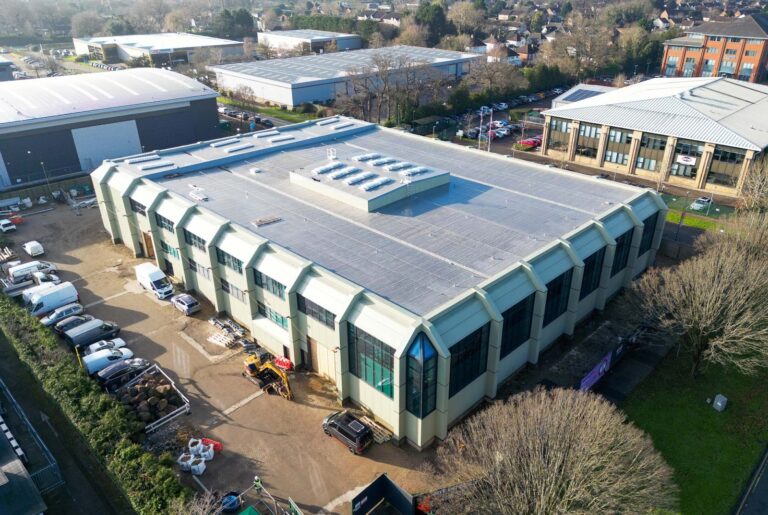In today’s fast-paced and highly competitive business environment, knowing when to invest in your infrastructure can be the difference between thriving and merely surviving. Whether you operate a manufacturing plant, a warehouse, a logistics hub, or any other type of commercial or industrial facility, recognizing the signs that it’s time to expand is critical to your ongoing success.
Strategic facility expansion has proven to be one of the most effective ways to accommodate growth, improve productivity, and reduce inefficiencies. In fact, financial analysis of UK construction and industrial businesses shows that companies investing in infrastructure in line with market conditions are more likely to achieve sustained or increased turnover—even during periods of economic uncertainty.
But the question remains: how do you know when it’s time to expand?
Here are seven key signs that your facility is due for expansion — and why addressing these issues proactively can unlock real business value.
1. Your Operations Are Outgrowing Your Current Space
One of the most obvious indicators that it’s time to expand is a lack of space. If your operations are spilling over into areas not originally designed for production or storage — or if you’re constantly rearranging equipment, inventory, or workstations to “make things fit” — you may be limiting your capacity for growth.
Common signs include:
- Congested workspaces that slow down processes
- Equipment or inventory stacked in unsafe or inefficient ways
- Employees working in temporary or makeshift areas
- Difficulty accommodating new machinery or tools
As businesses grow, their spatial requirements evolve. Expanding your facility can restore operational efficiency, create a safer and more productive environment, and allow you to take on more business without sacrificing quality or delivery timelines.
2. Storage and Workflow Inefficiencies Are Costing You Money
Space constraints often lead to disorganised storage, inefficient layouts, and chaotic workflows. When employees are forced to walk long distances to retrieve tools or materials, or when inventory is misplaced due to poor organisation, productivity drops — and costs rise.
Symptoms to watch for:
- Overtime hours caused by delayed workflows
- Lost or damaged inventory
- Regularly exceeding your labour budget due to inefficiencies
- Frequent errors in order fulfillment or shipping
An expanded and properly designed facility allows for optimised workflows, smart inventory systems, and logical storage solutions. Investing in better space planning can yield a substantial return through reduced labour costs, faster production cycles, and increased throughput.
3. You’re Turning Away Business Due to Capacity Limits
It’s a good problem to have — more demand than you can meet. But without sufficient infrastructure, saying “no” to new clients or large orders can quickly become a missed opportunity that your competitors are happy to grab.
Ask yourself:
- Have you recently declined business because of capacity?
- Are you hesitant to market aggressively due to infrastructure limitations?
- Are you relying on subcontractors or outsourcing because your facility can’t handle the load?
If the answer to any of these is yes, expansion could be the key to unlocking growth. A larger, more capable facility enables you to meet customer demand, reduce lead times, and grow your reputation as a reliable and scalable provider.
4. Employee Productivity Is Impacted by Overcrowding
The workplace environment directly affects employee morale, health, and efficiency. If your team is working shoulder-to-shoulder, navigating cluttered areas, or frequently disrupted by noise or congestion, productivity will inevitably decline.
Warning signs include:
- Staff complaints about limited space or poor working conditions
- High employee turnover
- Increased accident reports or near-misses
- Reduced output despite high levels of effort
Expanding your facility enables you to reimagine the work environment. Dedicated break rooms, meeting spaces, quiet areas, and better workstation spacing all contribute to higher employee satisfaction and lower stress — which, in turn, drives better performance and retention.
5. Your Industry Regulations Require Upgrades
Compliance requirements evolve — often faster than the buildings designed to meet them. Whether it’s updates to fire safety codes, health and safety regulations, environmental standards, or accessibility legislation, your facility must keep up.
If your site has:
- Outdated electrical, plumbing, or ventilation systems
- Insufficient fire exits or emergency lighting
- Non-compliant hazardous materials storage
- Poor accessibility for disabled employees or visitors
…it’s time to consider a compliance-focused expansion. Upgrading your space to meet current and future standards not only reduces risk but also shows clients, employees, and stakeholders that you are a responsible, forward-thinking organisation.
6. You Need Better Energy Efficiency and Sustainability
Older facilities often lack the modern systems needed for energy-efficient and sustainable operation. High utility bills, energy loss through poor insulation, and the absence of renewable energy options can eat into your margins and weaken your brand’s environmental credibility.
Signs it’s time for an upgrade include:
- Rising energy and maintenance costs
- Poor heating/cooling efficiency
- Lack of smart building technologies or monitoring systems
- Client or stakeholder pressure for sustainability reporting
An expansion project is the perfect opportunity to introduce:
- LED lighting, motion sensors, and automated controls
- High-performance insulation and windows
- Solar panels, green roofs, and rainwater harvesting systems
- Sustainable building materials with lower embodied carbon
Modernising your facility with sustainability in mind can result in long-term cost savings and a stronger competitive edge in today’s eco-conscious market.
7. You’re Planning for Long-Term Business Growth
Even if your current space seems “just fine” for now, future-proofing your operations is never a bad idea. Strategic expansion isn’t just about solving today’s problems — it’s about setting your business up for long-term success.
Ask yourself:
- Where do you want your business to be in five years?
- Will your current facility support future technologies or automation?
- Are you planning to hire significantly more employees?
- Are you looking to diversify your service or product offering?
If you have a clear growth trajectory, the time to plan for expansion is now. Waiting too long can lead to rushed, reactive decisions — or worse, stalled momentum due to infrastructure limitations. Proactive expansion ensures that when opportunity knocks, you’re ready to answer.
Planning Your Expansion: Key Considerations
When considering a facility expansion, preparation is everything. Here are a few critical steps to take:
- Conduct a Site Feasibility Study
Understand your current limitations, space constraints, zoning laws, and potential for on-site expansion. - Align with Business Objectives
Any expansion must be in harmony with your broader business goals — not just a response to a temporary challenge. - Work with Experienced Professionals
Architects, engineers, and construction specialists who understand industrial/commercial requirements can help design a cost-effective and compliant solution. - Minimise Operational Disruption
Staging the build, using off-site construction methods, or planning during low seasons can reduce impact on your day-to-day work. - Plan for Flexibility
Build with future adaptability in mind — modular designs and scalable infrastructure allow your facility to evolve alongside your business.
Conclusion: A Smart Expansion is a Strategic Advantage
If your business is facing space constraints, workflow inefficiencies, compliance challenges, or missed growth opportunities, an expansion may not just be an option — it could be essential.
Facilities that grow in sync with the business they support are more efficient, more productive, and more resilient. Recognising the early signs and acting on them positions you ahead of the curve, ready to capture market share, attract top talent, and meet your clients’ expectations.
So, if any of these seven signs sound familiar, it might be time to take a closer look at your facility — and start planning for what’s next.

